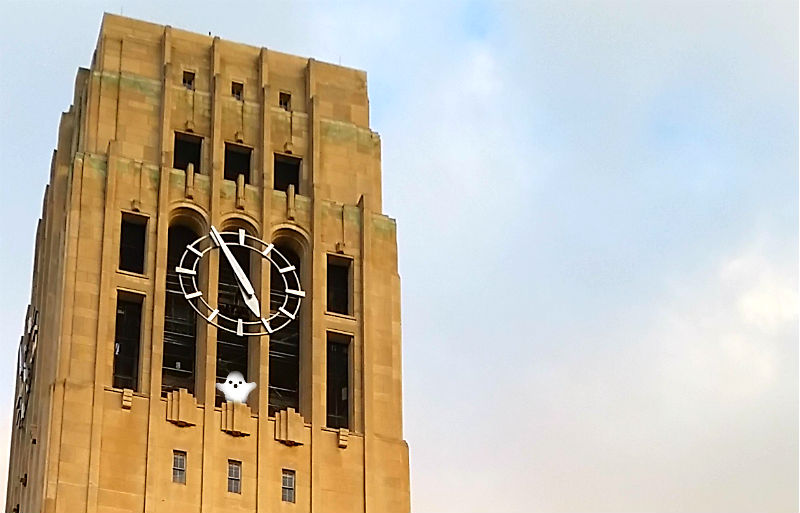Hell's Bells: "The Haunted Belfry" casts creepy chimes across campus

Spooky music is coming from somewhere on the University of Michigan’s campus. You move toward the creepy, clanging sound, the bells getting louder and louder with every passing step as the sky turns dark and everything suddenly seems eerie. Finally, you arrive at the carillon in the Burton Memorial Tower and you see people going inside. You pause at the entrance and wonder whether you should go in. The thunder crackles as you cross the precipice and step into the unknown.
Welcome to The Haunted Belfry.
“It’s a really good opportunity for people to actually connect with the carillon and understand that it’s (played by) a human and not, like, a robot,” laughed Hoai An Pham, one of the family-friendly event’s organizers. “The event is very casual and really a chance for people to get to learn about the carillon and also, get in the Halloween spirit.”
The Haunted Belfry has been helping students, and the community, get in the Halloween spirit since 2015 after Tiffany Ng, University of Michigan assistant professor of carillon, spearheaded it. This year, the annual event will take place on Sunday, Oct. 29 at 3:30 pm. It’s being organized by three carillon students: Pham, Michelle Lam, and Rachael Park.

Like previous years, there are plans to decorate the belfry with Halloween decorations and carillon students will play music ranging from more classical pieces to the themes from Harry Potter and The X-Files. Park said they are also encouraging performers to play more well-known, contemporary songs, something she said Professor Ng encourages of her students. Costumes are more than welcome for those attending and those performing.
Once inside the belfry, guests will not only get to see the carillon in action but go on student-led tours of it to learn more about the historic building, which was built in 1936. Those attending will also get to test out the carillon and hear the notes they play echo across campus. Pham said they usually have people play the heaviest note, which weighs about 12 tons, and the lightest, which weighs under 20 pounds.
“It’s really fun to see people’s reactions,” Park said. “Even I get really excited when I recognize what music is being played on the carillon.”
Park also thinks the carillon is ideal for Halloween music with its low and heavy sound. Both Park and Pham, who have each been playing the carillon for over a year, agree that the annual event is not only fun but educational for the community as well.
“One of our main goals in the carillon field, and I think Professor Ng has done a really great job with it too, is opening up the carillon to the community because it’s so central. Like, you can’t miss it,” Pham said.
Pham also said that most people don’t know what a carillon is, which is why events like this are so ideal.
For the record, a carillon is similar to an organ. The carillon inside Burton Memorial Tower --
the Charles Baird Carillon (named after the university’s first athletic director, who donated the carillon) -- consists of 53 bells.
Park said that when you walk into the playing cabin, aka the belfry, there’s sort of a keyboard set-up but with handlebars poking out instead of keys. Those handlebars are then played with slightly closed fists as feet pedals are pushed. Those keys correspond to how high or low the note is, which depends on its weight. There’s a clapper inside the bell which goes off when a mechanism hits the bell.
“There’s a series of wires and physics,” laughed Pham.
The carillon -- which was developed in Europe in the 15th and 16th centuries -- might be more associated with classical music more than anything else, but Park and Pham are hoping they can change people’s perspectives not only on carillons but what a music recital can be.
“We’re able to give people a different way of saying, ‘Oh, it doesn’t always have to be you sitting in a concert hall listening to someone play the piano and sitting still for two hours.’ It can also be like this,” Pham said. “Being able to give that to people is really fun.”
The spooky music doesn’t hurt either.
Dana Casadei is a freelance reporter covering arts and entertainment in Michigan.
"The Haunted Belfry" program will be performed Sunday, Oct. 29 at 3:30 pm at Burton Memorial Tower on U-M's central campus. Visit events.umich.edu for more info.


































